Modern espionage seems dominated by massive troves of data, hacking and intercepts captured by satellites, even troll farms. But in Moscow a tale of espionage from a very different era has resurfaced.
It’s been more than 60 years since Kim Philby, an upper-class Englishman with legendary charm, slipped aboard a Russian freighter in Beirut and defected. He’d been a Soviet double agent for years, but the net was closing in.
Russia’s foreign intelligence service has released previously unseen secret documents about his spying for the KGB (and its predecessor, the NKVD), and his life in Moscow after 1963. They form part of a new exhibition at the Russian Historical Society in an elegant 19th century mansion in Moscow.
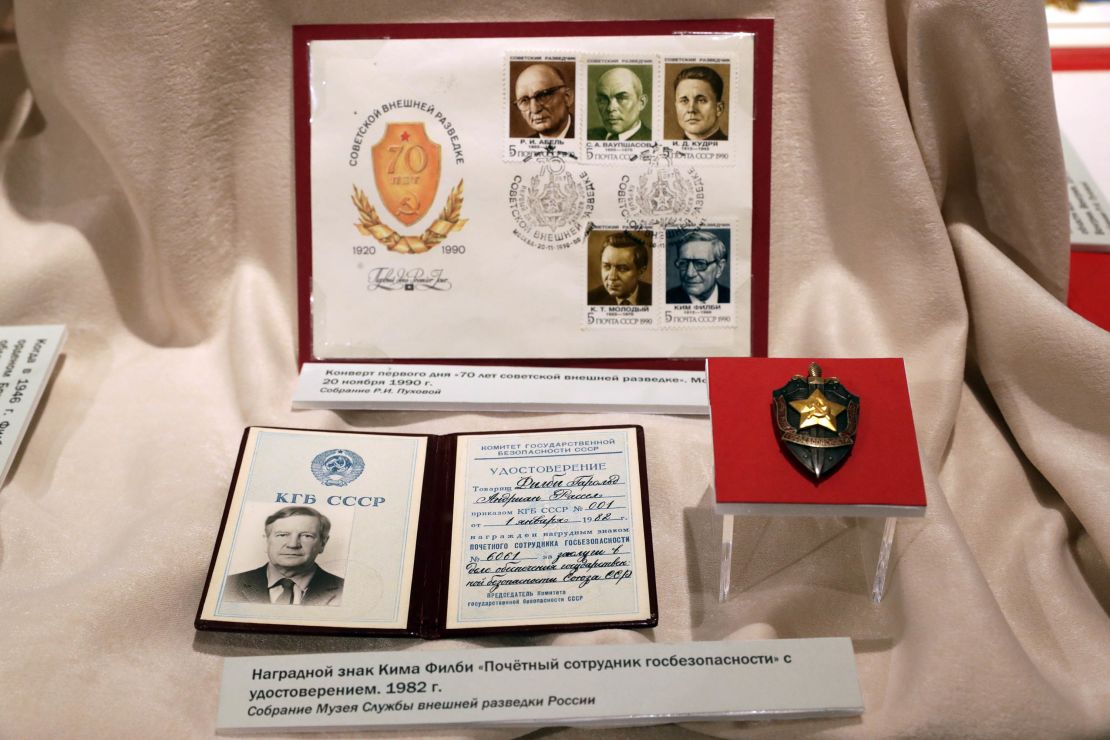
In Britain, Philby was and is regarded as a traitor – one of five double agents known as the Cambridge Five spy ring because of the university they all attended. Throughout the Second World War and beyond, he gave Russian agents reams of British intelligence documents, probably revealing in the process the identities of dozens of informants.
But many Russians still regard him as a hero for passing on intelligence about the war plans of Nazi Germany and Japan – which probably saved thousands of Russian lives.
A key Soviet asset
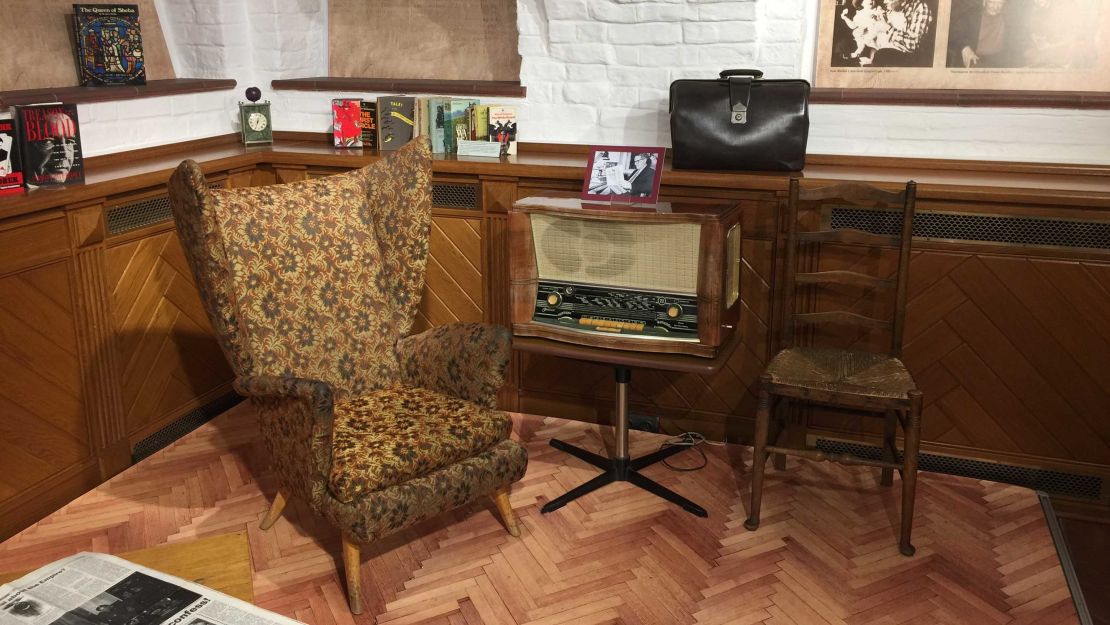
The exhibition includes some of those documents as well as the briefcase which Philby used to carry them nonchalantly out of the London headquarters of the foreign-intelligence service MI6. Many are marked “Top Secret – To Be Kept Under Lock and Key.”
They include a British diplomatic cable about the visit of US Vice President Henry Wallace to Russia and China in 1944. The most interesting, perhaps, is an intercepted telegram from July 31, 1944, containing Benito Mussolini’s account to Japan’s ambassador in Italy of the attempt by German officers to assassinate Adolf Hitler days earlier.
Mussolini told the ambassador: “The force of the explosion was astonishing and the Fuhrer sustained minor injuries to his left hand and arm … and some of his hair was burned.”
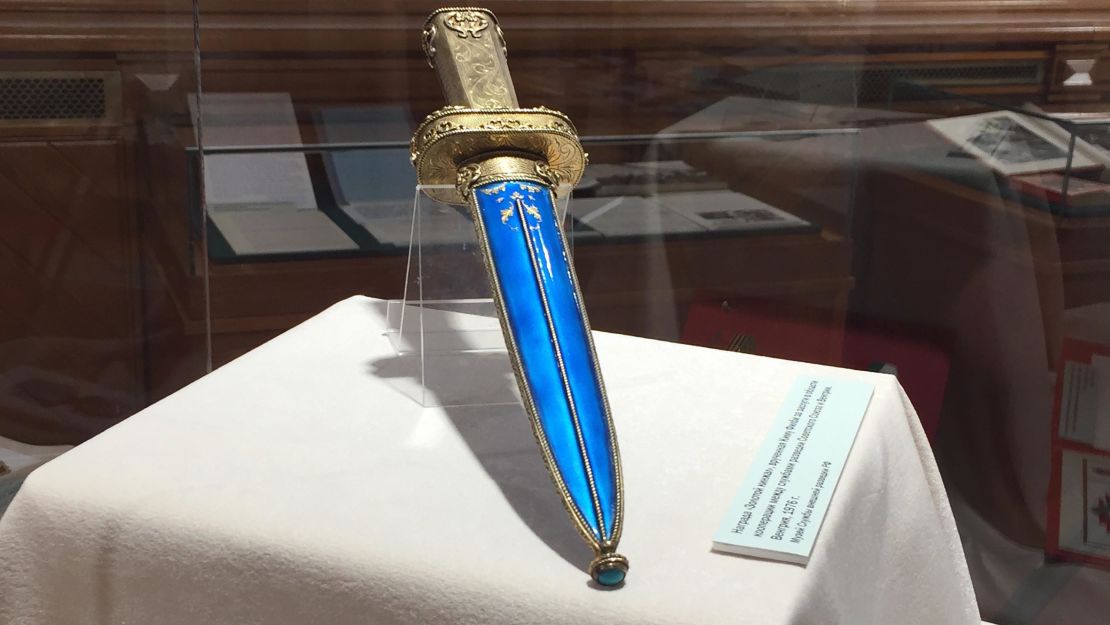
Such timely intelligence would have been extraordinarily valuable to Soviet intelligence.
After the war, Philby rose to be in charge of the UK intelligence relationship with the CIA and FBI, based in Washington. Two others in the Cambridge circle, Guy Burgess and Donald Maclean, defected to Moscow in 1951 – and Philby had to leave MI6 because of what he publicly called his “imprudent association” with Burgess. But he was cleared of espionage, and began a new life as a journalist in Beirut.
Defection washed down with cognac
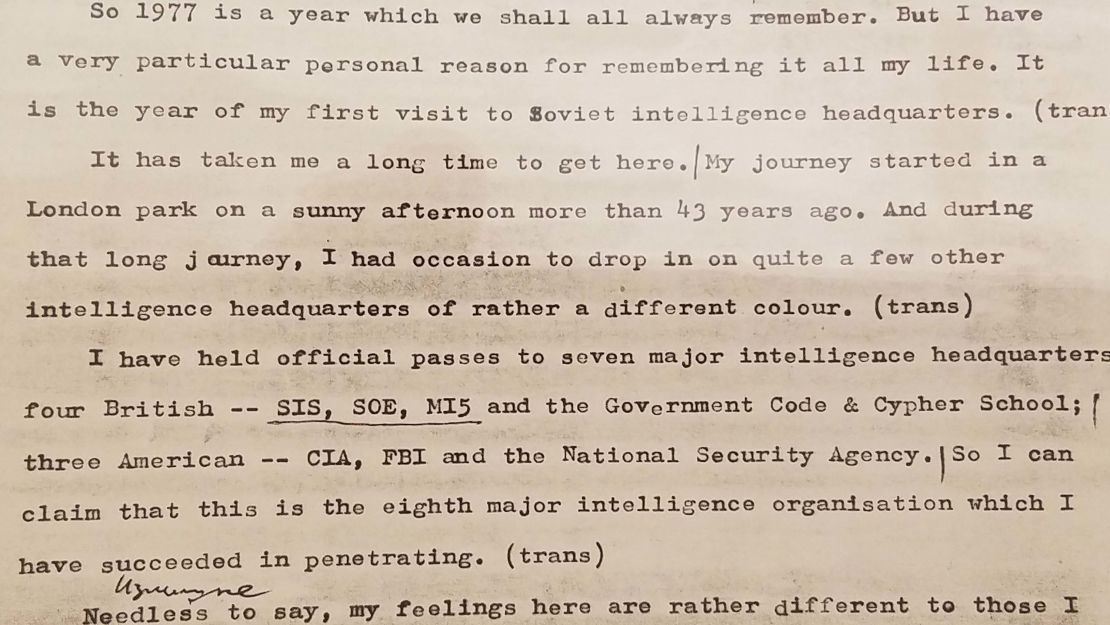
Among the documents on display in Moscow is a typed account of his sudden defection that night in January 1963, as evidence against him gathered. He said nothing to his then-wife Eleanor, but phoned his son asking him to let her know that “I should probably be very late.” It was something of an understatement.
In fact he was about to board the Dolmatova on a one-way passage to Odessa. The captain greeted Philby – a phenomenal drinker – with a bottle of cognac.
Once in Moscow, he became comrade Philby, issued with a KGB pass and awarded a string of medals, including the Order of Lenin. His image was even on a Soviet postage stamp. He married (for the fourth time) a Russian woman 20 years his junior.
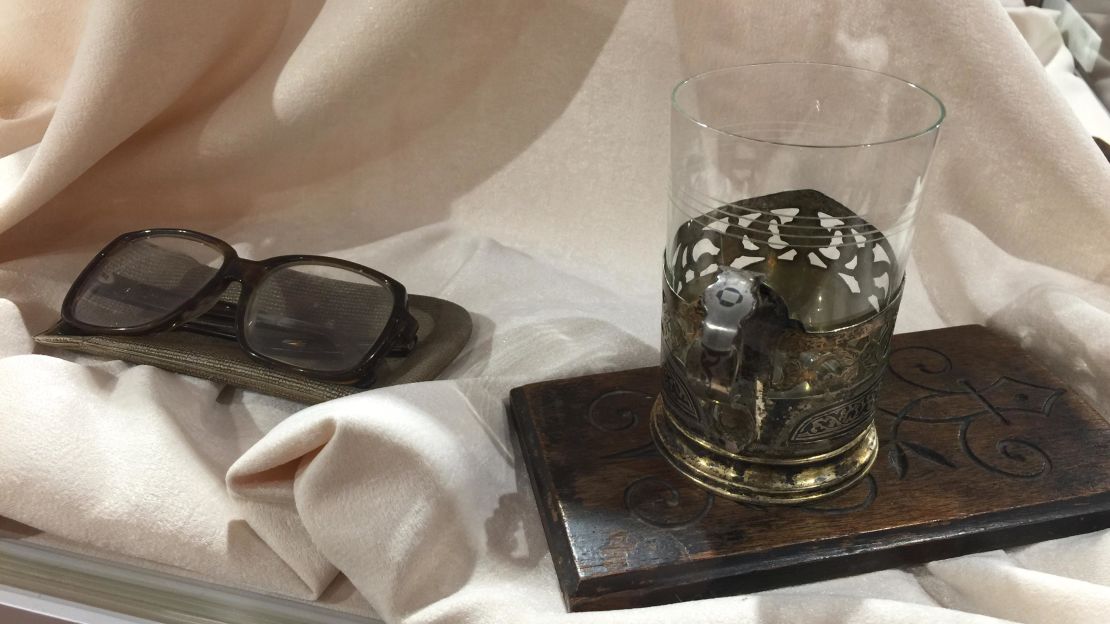
He also trained many KGB agents, but Philby found his students lacking in subtlety. When working abroad, “they must not bore or repel people by endless repetition of the party line,” he told them, but try to engage possible targets.
At least, he said, he felt at home in Moscow. One of the documents on display contains notes from a talk he gave to KGB agents in 1977. “My journey started in a London park on a sunny afternoon more than 43 years ago.” That’s when he met Arnold Deutsch, a recruiter for Soviet intelligence, in Regents Park.
He also spoke of his time at MI6. “There I felt myself surrounded by wolves; here I know I am with comrades, colleagues and friends.”
In another note from 1977, Philby wrote: ‘May we all live to see the Red Flag flying over Buckingham Palace and the White House.’
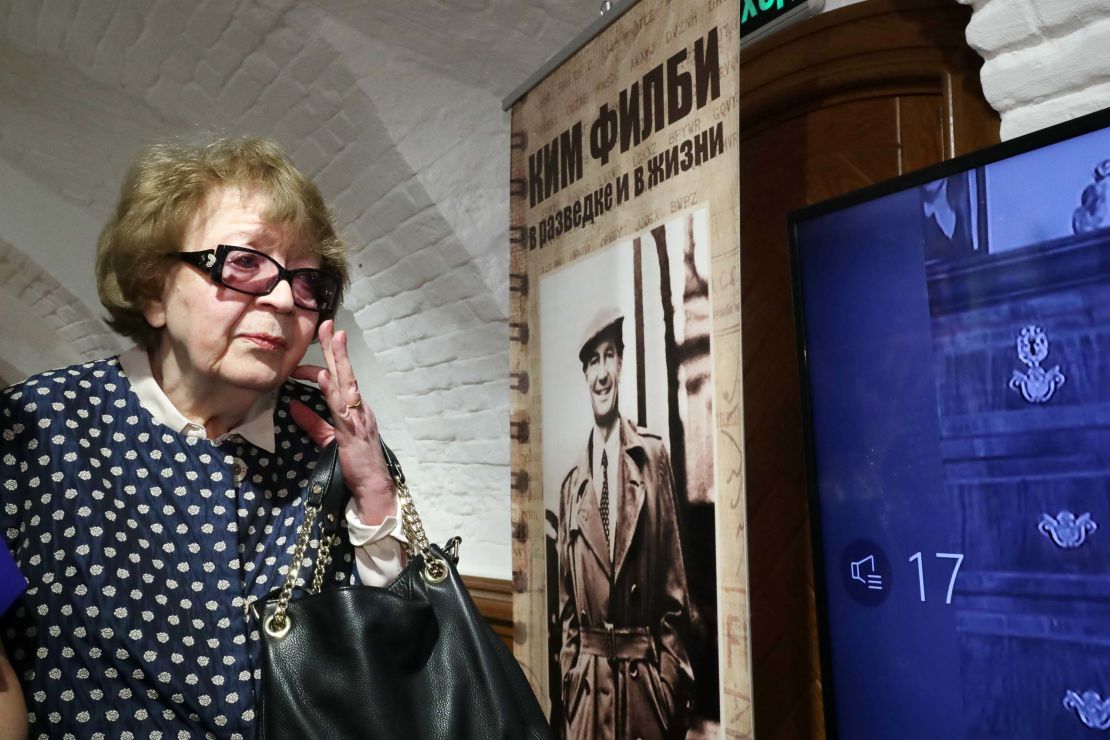
But toward the end of his life, he seemed to have growing doubts about the Soviet system. His widow, Rufina Pukhova, told a Russian newspaper in 2011: “Kim believed in a just society and devoted his whole life to communism. And here he was struck by disappointment, brought to tears. He said, ‘Why do old people live so badly here?’”
Visitors to the Moscow exhibition of Philby’s life say they are fascinated by the very human – even romantic – era of spying, when ideology and human frailties rather than high-tech surveillance were the currency of intelligence.
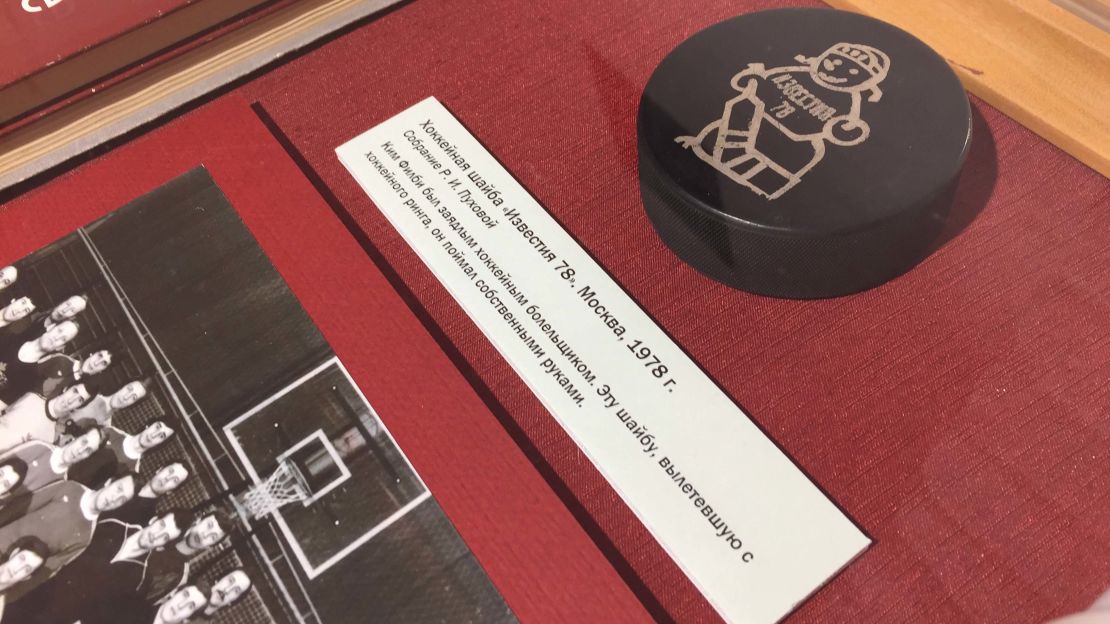
Anna Tchernakova, a filmmaker, said she admired Philby for his convictions. “He became a communist in the 1930s because of what he saw was happening in Germany. You choose loyalties once and you keep them for the rest of your life; he was an idealist,” she said.
It’s a sentiment echoed by Sergey Naryshkin, head of the Russian Foreign Intelligence Service, who opened the exhibition. Philby, he said, “was guided by anti-fascist beliefs, chose to work with Soviet intelligence and never regretted it.”
Philby is not forgotten in Moscow; some of his old KGB trainees still gather for a (rather boozy) dinner in his honor every year. And a plaque outside the spy agency’s headquarters depicts him as Janus – the Roman god of time – with one face looking to the past and the other to the future.
CNN’s Mary Ilyushina contributed to this report.




